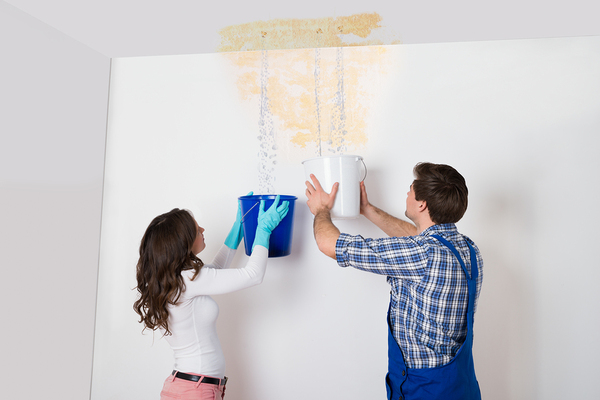The Residential Primary Common Leak Triggers: Investigation
The Residential Primary Common Leak Triggers: Investigation
Blog Article
What are your concepts on How to Find Water Leaks?

Leaks not just cause waste of water however can also trigger unneeded damage to your house and also promote undesirable natural growth. By comprehending and also looking for day-to-day situations that cause leaks, you can shield your residence from future leaks and unneeded damage.
Elbowing in roots
A lot of water leaks begin outside the house rather than inside it. If you notice an unexpected decline in water pressure, say in your faucet, take some time to go out and also examine your yard. You may discover damp spots or sinkholes in your yard, which might suggest that tree roots are attacking water lines triggering water to seep out. You can have your plumber look for intrusion, specifically if you have trees or shrubs near your home.
Rusty water supply
As time goes by, your plumbing system ages as well as rust such as rust may begin gnawing the pipelines. This might be the source of discoloration or bending on your water pipes. This requires an inspection with your plumber quickly. If our plumbing system is old, think about changing the pipelines because they are at a higher threat of deterioration than the newer versions.
Malfunctioning Pipe Joints
Pipe joints can degrade over time, resulting in water leaks. If you have loud pipelines that make ticking or banging noises, specifically when the hot water is transformed on, your pipe joints are most likely under a whole lot of pressure.
Immediate temperature level modifications.
Severe temperature level changes in our pipes can create them to increase and also get unexpectedly. This development as well as tightening may create cracks in the pipes, specifically if the temperature level are below freezing. If you kept an eye on just how your plumbing works, it would certainly be best. The visibility of the previously stated situations often shows a high risk.
Poor Water Connectors
At times, a leak can be triggered by loosened pipes as well as pipelines that provide your home appliances. In instance of a water connections leakage, you may observe water running straight from the supply line or puddles around your appliances.
Obstructed Drains
Blocked drains may be annoying and also inconveniencing, but they can often wind up triggering an overflow bring about break pipelines. Maintain getting rid of any kind of products that might decrease your drains pipes that might block them to avoid such hassles.
All the above are reasons for leakages but not all water leakages arise from plumbing leaks; some leaks could come from roofing system leaks. All leakages must be repaired instantly to avoid water damages.
Leaks not just trigger waste of water but can additionally trigger unnecessary damages to your house and advertise unwanted natural growth. By looking and comprehending for everyday circumstances that cause leaks, you can protect your house from future leakages and unneeded damages. Today, we will look at 6 leak triggers that might be triggering your pipelines to drip.
At times, a leak can be triggered by loose pipes as well as pipelines that supply your appliances. In instance of a water connections leak, you might see water running directly from the supply line or puddles around your home appliances.
How To Check For Water Leak In Your Home
How To Check for Leaks
The average household's leaks can account for nearly 10,000 gallons of water wasted every year and ten percent of homes have leaks that waste 90 gallons or more per day. Common types of leaks found in the home are worn toilet flappers, dripping faucets, and other leaking valves. These types of leaks are often easy to fix, requiring only a few tools and hardware that can pay for themselves in water savings. Fixing easily corrected household water leaks can save homeowners about 10 percent on their water bills.
To check for leaks in your home, you first need to determine whether you're wasting water and then identify the source of the leak. Here are some tips for finding leaks:
Take a look at your water usage during a colder month, such as January or February. If a family of four exceeds 12,000 gallons per month, there are serious leaks.
Check your water meter before and after a two-hour period when no water is being used. If the meter changes at all, you probably have a leak.
Identify toilet leaks by placing a drop of food coloring in the toilet tank. If any color shows up in the bowl after 10 minutes, you have a leak. (Be sure to flush immediately after the experiment to avoid staining the tank.)
Examine faucet gaskets and pipe fittings for any water on the outside of the pipe to check for surface leaks.
Undetected water leaks can happen without the home or business owner even realizing. If you suspect a water leak, but not able to find the source. It is time to contact a professional water leak detection service, The Leak Doctor.
How To Find a Water Leak In Your Home
https://www.leakdoctor.com/blog/How-To-Check-For-Water-Leak-In-Your-Home_AE197.html

Hopefully you enjoyed our excerpt on How to detect water leaks in your home. Thank you so much for finding the time to read through our post. Feel free to take a moment to distribute this article if you enjoyed reading it. Many thanks for your time spent reading it.
Plumbing woes? Connect. Report this page